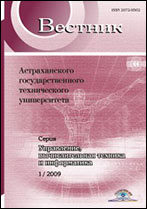|
This article is cited in 1 scientific paper (total in 1 paper)
COMPUTER SOFTWARE AND COMPUTING EQUIPMENT
Features of sotware implementation of algorithms of the technique of the training set for the binary qualifiers used in the anti-virus heuristic static analysis
R. Yu. Demina
Astrakhan State Technical University
Abstract:
In the context of rapid expansion of means of computation, computer files are increasingly used as objects of binary classification. Binary classification of files plays a specific role in the anti-virus heuristic static analysis. Classification process consists of two stages: training and recognition. At the training stage a training set of objects is formed. The selection is important to be carried out not randomly, but in a targeted manner, taking into account a variety of objects. As introduction of the additional procedure of formation of the training set will lead to the increase in total training hours, it is necessary to consider all features of the software implementation, so that this stage would last the least time possible. The article presents the technique of formation
of the training set and describes the main nuances needed to reduce the time of calculations. There has been determined the algorithm of advanced binary search designed to form the sorted sequence of unique elements. There is considered the main feature (a method of data storage) which can influence the time of algorithm execution. The article gives an example of a code realizing the function of advanced binary search in the high level language C++. The research results allow attempting program realization of the offered approaches for their further implementation into anti-virus systems.
Keywords:
binary classification, training set, binary search, software implementation.
Received: 16.03.2017
Citation:
R. Yu. Demina, “Features of sotware implementation of algorithms of the technique of the training set for the binary qualifiers used in the anti-virus heuristic static analysis”, Vestn. Astrakhan State Technical Univ. Ser. Management, Computer Sciences and Informatics, 2017, no. 2, 62–68
Linking options:
https://www.mathnet.ru/eng/vagtu479 https://www.mathnet.ru/eng/vagtu/y2017/i2/p62
|

|




 Contact us:
Contact us: Terms of Use
Terms of Use
 Registration to the website
Registration to the website Logotypes
Logotypes








 Citation in format
Citation in format 
